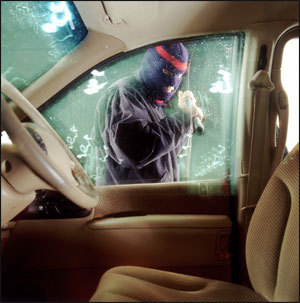Hot Spots: NICB's Annual Report On Vehicle Theft
 The National Insurance Crime Bureau (NICB) reported on June 19, 2012 that 2011 was on track (final numbers will be published in the fall) as yet another consecutive year of declining vehicle thefts. Four of the top ten Metropolitan Statistical Areas (MSAs) reported more thefts in 2011 (+925 collectively) while the remaining six posted fewer (-2,017 collectively).
The National Insurance Crime Bureau (NICB) reported on June 19, 2012 that 2011 was on track (final numbers will be published in the fall) as yet another consecutive year of declining vehicle thefts. Four of the top ten Metropolitan Statistical Areas (MSAs) reported more thefts in 2011 (+925 collectively) while the remaining six posted fewer (-2,017 collectively).
It is important to note that the Hot Spots report is a reflection of vehicle thefts on a per-capita basis. An area with a much smaller population and a moderate number of thefts can—and often does—have a higher theft rate than an area with a much more significant vehicle theft problem and a larger population to absorb it.
For 2011, the ten MSAs with the highest vehicle theft rates were:
2011 Ranking, City, Previous Year's Ranking:
1. Fresno, CA (1)
2. Modesto, CA (2)
3. Bakersfield-Delano, CA (3)
4. Spokane, WA (4)
5. Yakima, WA (10)
6. San Francisco/Oakland/Fremont, CA (9)
7. Stockton, CA (7)
8. Anderson, SC (33)
9. Vallejo-Fairfield, CA (5)
10. Visalia-Porterville, CA (8)
NICB's Hot Spots report examines vehicle theft data obtained from the National Crime Information Center (NCIC) for each of the nation's MSAs. MSAs are designated by the Office of Management and Budget (OMB) and often include areas much larger than the cities for which they are named. For example, the Fresno, CA MSA includes all thefts within the entire county of Fresno, not just the city of Fresno.
The FBI's preliminary 2011 crime statistics released in June indicated a 3.3 percent drop in vehicle thefts from the 2010 number of 737,142. Contributing to this decline was the significant drop in the rankings of the Laredo, TX MSA; from number one in 2009 to fifty-three in 2011. Within two years, Laredo's thefts were down fifty-three percent, from 1,792 in 2009 to 849 in 2011.
The full report is available at www.nicb.org.
Although national vehicle thefts continue to decline, NICB still recommends that drivers follow their four "layers of protection" to guard against vehicle theft:
Common Sense — The common sense approach to protection is the easiest and most cost-effective way to thwart would-be thieves. You should always:
- Remove your keys from the ignition
- Lock your doors /close your windows
- Park in a well-lit area
Warning Device — The second layer of protection is a visible or audible device which alerts thieves that your vehicle is protected. Popular devices include:
- Audible alarms
- Steering column collars
- Steering wheel/brake pedal lock
- Brake locks
- Wheel locks
- Theft deterrent decals
- Identification markers in or on vehicle
- VIN etching
- Micro dot marking
Immobilizing Device — The third layer of protection is a device which prevents thieves from bypassing your ignition and hot-wiring the vehicle. Some electronic devices have computer chips in ignition keys. Other devices inhibit the flow of electricity or fuel to the engine until a hidden switch or button is activated. Some examples are:
- Smart keys
- Fuse cut-offs
- Kill switches
- Starter, ignition, and fuel pump disablers
- Wireless ignition authentication
Tracking Device — The final layer of protection is a tracking device which emits a signal to police or a monitoring station when the vehicle is stolen. Tracking devices are very effective in helping authorities recover stolen vehicles. Some systems employ telematics which combine GPS and wireless technologies to allow remote monitoring of a vehicle. If the vehicle is moved, the system will alert the owner and the vehicle can be tracked via computer.
 The National Insurance Crime Bureau (NICB) reported on June 19, 2012 that 2011 was on track (final numbers will be published in the fall) as yet another consecutive year of declining vehicle thefts. Four of the top ten Metropolitan Statistical Areas (MSAs) reported more thefts in 2011 (+925 collectively) while the remaining six posted fewer (-2,017 collectively).
The National Insurance Crime Bureau (NICB) reported on June 19, 2012 that 2011 was on track (final numbers will be published in the fall) as yet another consecutive year of declining vehicle thefts. Four of the top ten Metropolitan Statistical Areas (MSAs) reported more thefts in 2011 (+925 collectively) while the remaining six posted fewer (-2,017 collectively).